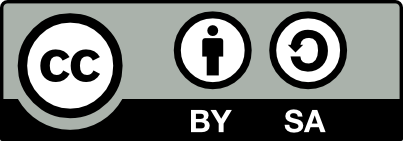Technology today is evolving at such a break-neck pace that it's sometimes hard to believe it's all really happening out there. Consider, for a moment, the ubiquitous smartphone. Assuming a ten year time frame, the evolution that has taken place in the mobile arena is astounding. What was earlier just a tool to talk to people has today transformed into something entirely different. Today, voice call is just a by-feature present on all of them. Coupled with this, are things like the camera, internet, apps, and whatnot. And it's not just phones, there are a lot many products out there that have been fortunate enough to reach the next level, undergo a transformation, and sometimes create a revolution.
One such product that has seen a lot of innovations in the last 10 years, is the television. Admittedly, even though TVs haven't been able to experience a transformation like the mobiles have, the innovations that have surfaced are still commendable. And while some of these changes have been for the better, there are others that have not.
In the last few years, digital TV boxes have led to things like the channel guide, reminders and shows on demand. But while these features in themselves are pretty impressive, the implementation has not been perfect. It's still a task to go through the menu and search for a show. Many a times, the interface is laggy and bug-prone. And this is true for most of the services out there.
The HD revolution has surely played a big part in the TV sector. And while this change has been very welcome, it would be even better if it would be all pervasive. While HD content is shot in 16:9 aspect ratio, which is the standard ratio that most TV sets employ these days, non-HD content is mostly shot and streamed in the conventional 4:3 ratio, which either leads to horizontal black bars around the image or, if one choses, inhuman horizontal stretching of the image to fit in the 16:9 TV. And to face the truth, most content out there is still in the age-old 4:3. It's about time this changes.
And now to talk of the remote. It's nearly painful to reflect how little this thing that we all have searched and fought over, has changed over the eons. It still is a gigantic task to operate the TV via the remote. In the age of touchscreens and voice control, it's unbelievable how the remote hasn't picked up pace. We still have to look for and press buttons, just like we did 10 years ago. And not just that, we still have to point the thing at at the infrared reciever on the box to register a command. It would be smart on the part of the TV companies to recognise this and do something about it. To boot, the use of the ancient technology of infrared has to go. The omnidirectional WiFi can be implemented so that we may press the buttons without first directing the remote towards the box or TV. Next, touchpads can be provided on the remote itself to allow for intelligent gestures to control the TV. The same can be implemented with a camera in place that would understand hand gestures. Lastly, the innovations in voice recognition technology can make it immensely easier to command the TV.
While these are some of the few categories which need tweaking, over the years, there have emerged some entirely new categories which were presented as revolutionary but turned out to be nothing more than a marketing gimmick, an unnecessary add on. The prime example of this is the 3D revolution. Why all the companies went and put 3D in their TV, thinking everyone would sit on their couch wearing uncomfortable and bulky shutter glasses is beyond me. Maybe it's because the TV makers thought people would really see unicorns jump out of their screens. Or maybe they actually thought it was going to be revolutionary. But it's probably because consumers are naive, and will eat up anything presented as shiny. People would be wise to not give in to this pretentiousness and help drive 3D away.
Another example of this is the advent of TVs having 4K resolution. That's twice the resolution of the full HD, which is 1080p. Presented as Ultra HD, this is the next big thing set to happen to television. Only it wouldn't. Atleast not right now. The problem being that a typical movie shot in 4K would take up around a mammoth 200GB of memory. And there is no way with the current prevalent broadband data and price rates that this is feasible for digital downloading or streaming. Also, there just isn't enough 4K content out there to buy a 4K TV. While this is not as bad as the 3D, the timing is just not right. Maybe one day when the download speeds would match the file size of it, and there would be enough content, 4K would be feasible, but not today.
Even after decades of existence, there remains massive scope for improvement to the household television. There are a lot many new things coming in, and that's great. But it would only make sense to pile inventions on top of one another once the necessary and basic technology is perfected. TV companies should first drive to improve the user experience, the interface, the remote, the content and then future proof the TV by bringing in the Ultra and the Mega HDs. Until that happens, the TV will continue to be an idiot box.
-Abhishek Jain

No comments:
Post a Comment